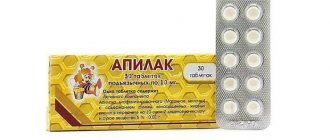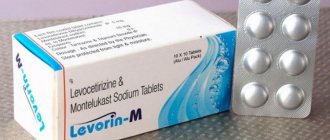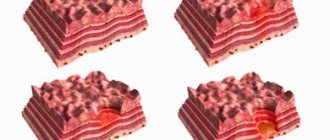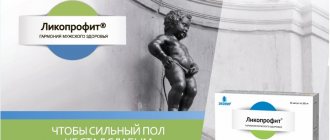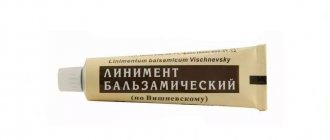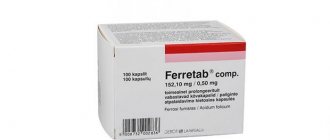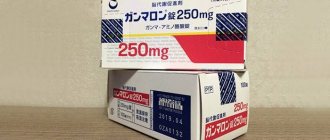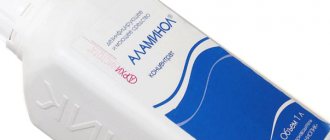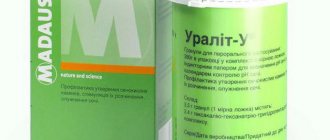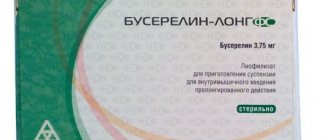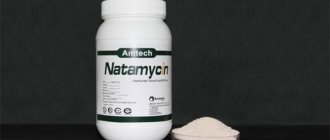Write a review
Reviews: 0
Manufacturers: NIZHFARM
Active ingredients
- Chlorhexidine bigluconate
Disease class
- Itching of the vulva
- Syphilis, unspecified
- Gonococcal infection
- Urogenital trichomoniasis
- Presence of (intrauterine) contraceptive device
- Surgical practice
- Inflammatory diseases of the female pelvic organs caused by syphilis (A51.4, A52.7)
- Gonococcal inflammatory diseases of the female pelvic organs
- Other inflammatory diseases of the vagina and vulva
- Erosion and ectropion of the cervix
Clinical and pharmacological group
- Not indicated. See instructions
Pharmacological action
- Antibacterial
- Antiseptic (disinfectant)
Pharmacological group
- Antiseptics and disinfectants
Compound
One Hexicon suppository contains 16 mg of Chlorhexidini bigluconas , as well as a polyethylene oxide base (polyethylene oxide 1500/Polyaethylenoxydum 1500, polyethylene oxide 400/Polyaethylenoxydum 400).
The Hexicon D suppository contains 8 mg of Chlorhexidini bigluconas , as well as a polyethylene oxide base (polyethylene oxide 1500/Polyaethylenoxydum 1500, polyethylene oxide 400/Polyaethylenoxydum 400).
The solution for external use contains 0.5 mg of Chlorhexidini bigluconas with a concentration of 20%, purified water (Aqua purificata).
One hundred grams of the gel contains 0.5 g of Chlorhexidini bigluconas and auxiliary components: Cremophor - RH 40 (Cremophor RH 40), poloxamer 407 (Poloxamerum 407), purified water (Aqua purificata).
One vaginal tablet Hexicon contains 16 mg of Chlorhexidini bigluconas (in the form of a solution of Chlorhexidini bigluconas with a concentration of 20%) and auxiliary components: microcrystalline cellulose (Cellulosum microcrystallisatum), pregelatinized corn starch (Amylum maidis), low molecular weight povidone, stearic acid (Acidum stearicum), lactose monohydrate.
pharmachologic effect
Hexicon belongs to the pharmacotherapeutic group of drugs with antiseptic and disinfectant effects . By interacting with the structures of the microbial cell , it disrupts vital activity, inhibits development and provokes the death of pathogenic microflora .
The use of various dosage forms of Hexicon in gynecological practice allows not only to successfully combat pathogenic microorganisms , but also to prevent PP-transmitted infectious diseases.
Indications
Hexicon solution and tablets (vaginal suppositories) are prescribed for the treatment of the following diseases:
- Prostatitis and urethritis
- Pathologies of the epidermis and mucous membranes
- Wounds and burns with exudate
- In dentistry: gingivitis, stomatitis, periodontal disease, ulcerations of the oral mucosa associated with trauma
- Prevention of genital infections
- Treatment of vulvitis, colpitis and vaginitis in gynecological practice
- Dermatology: impetigo, diaper rash, pyoderma, bedsores
- Gangrenous balanitis in men
- Infections of the alveoli, aphthae in dentistry
- Inflammatory process associated with intrauterine contraceptive
- Erosive manifestations on the neck.
Pharmacodynamics and pharmacokinetics
Chlorhexidine, which is part of Hexicon as an active component , is a strong disinfectant, sensitivity to which is shown by a wide range of microorganisms , including Gram (+) and Gram (-) bacteria , protozoa , herpes viruses .
Hexicon is effective against:
- gonococci (Neisseria gonorrhoeae);
- Treponema pallidum (Treponema pallidum);
- chlamydia (Chlamydia spp.);
- gardnerella (Gardnerella vaginalis);
- ureaplasma (Ureaplasma spp.);
- bacteroides fragilis (Bacteroides fragilis);
- trichomonas (Trichomonas vaginalis);
- herpesvirus type II (HSV-2).
Some strains of Pseudomonas spp. and Proteus spp. are characterized by low sensitivity to the drug . Viruses , fungi , bacterial spores , and acid-resistant bacteria are resistant to its effects .
the chlorhexidine included in Hexicon the drug has a number of advantages over other antimicrobial and antiseptic agents . He:
- does not disrupt the natural microflora of the female genital tract and does not affect the activity of lactobacilli ;
- microorganisms sensitive to it (even with repeated use);
- approved for use in the treatment of pregnant and lactating women ;
- remains (albeit to a lesser extent) active in the presence of bloody discharge and pus.
The effectiveness of suppositories is also ensured by the properties of polyethylene oxide 1500 (Polyaethylenoxydum 1500) and polyethylene oxide 400 (Polyaethylenoxydum 400) included in their composition. These substances ensure a more uniform distribution of the active substance over the surface of the mucous membrane and its deeper penetration into the tissue.
In addition, the polyethylene oxide base dehydrates pathogenic microorganisms and cleanses the mucous membrane of their metabolic products that accumulate on it.
Hexicon vaginal tablets were developed as an alternative to suppositories. For some women, they are somewhat more convenient than candles, since they do not increase the volume of discharge and, therefore, do not require the use of additional hygiene products.
It is practically not absorbed from the gastrointestinal tract , as well as through the skin and mucous membranes when applied topically. Systemic absorption when using Hexicon tablets intravaginally is extremely insignificant.
If 0.3 g is inadvertently ingested, Cmax is reached after half an hour and is 0.206 µg/l.
The drug is eliminated from the body mainly with the contents of the intestines (90%), less than 1% is excreted by the kidneys.
Vaginal tablets Hexicon
Instructions for medical use of the drug
Description of pharmacological action
Antiseptic drug for external and local use. Active against gram-positive and gram-negative bacteria - Treponema spp., Chlamydia spp., Ureaplasma spp., Neisseria gonorrhoeae, Gardnerella vaginalis, Bacteroides fragilis; protozoa - Trichomonas spp.; viruses - Herpes simplex type 2. The gel, when applied to the skin and mucous membranes, has a bactericidal effect. Remains active (albeit somewhat reduced) in the presence of blood and pus.
Indications for use
Common to vaginal suppositories and solution for external use: prevention of sexually transmitted infections (syphilis, gonorrhea, trichomoniasis, chlamydia, ureaplasmosis, genital herpes, etc.). For vaginal suppositories Hexicon® (additionally): vulvar itching; prevention of infectious and inflammatory complications in obstetrics and gynecology (before surgical treatment of gynecological diseases, before childbirth and abortion, before and after installation of an intrauterine device, before and after diathermocoagulation of the cervix, before intrauterine examinations); exo- and endocervicitis, vaginitis (including nonspecific, mixed, trichomonas); treatment of bacterial vaginosis. For vaginal suppositories Hexicon® D (additionally): treatment of colpitis (including nonspecific, mixed, gonorrheal, trichomonas), bacterial vaginosis; prevention of infectious and inflammatory complications in pediatric gynecology (before surgical treatment of gynecological diseases). For solution for external use (optional): disinfection of purulent wounds, infected burn surfaces; infections of the skin and mucous membranes in surgery, obstetrics and gynecology, urology (urethritis, urethroprostatitis); in dentistry (rinsing, irrigation or application) for gingivitis, stomatitis, aphthae, periodontitis, alveolitis.
Release form
tablets 16 mg; contour packaging 5 cardboard pack 2; tablets 16 mg; contour packaging 5 cardboard pack 1; tablets 16 mg; contour packaging 10 cardboard pack 1;
Pharmacodynamics
For vaginal suppositories Active against protozoa, gram-positive and gram-negative bacteria: Treponema pallidum, Trichomonas vaginalis, Chlamydia spp., Ureaplasma spp., Neisseria gonorrhoeae, Gardnerella vaginalis, Bacteroides fragilis. Some strains of Pseudomonas spp., Proteus spp. are weakly sensitive to the drug, and acid-resistant forms of bacteria and bacterial spores are also resistant. Hexicon does not interfere with the functional activity of lactobacilli. Remains active (albeit somewhat reduced) in the presence of blood and pus. For solution for external use Active against gram-positive and gram-negative bacteria: Treponema pallidum, Chlamydia spp., Ureaplasma spp., Neisseria gonorrhoeae, Gardnerella vaginalis, Bacteroides fragilis, protozoa (Trichomonas vaginalis), herpes viruses, yeast-like fungi of the genus Candida, dermatophytes ( pathogens of favus (scab), microsporia, rubrophytosis, trichophytosis, epidermophytosis). Remains active (albeit somewhat reduced) in the presence of blood and pus. When applied to the skin and mucous membranes, it has a bactericidal effect.
Pharmacokinetics
For solution for external use Practically not absorbed from the gastrointestinal tract. After accidental ingestion of 300 mg, Cmax is reached after 30 minutes and is 0.206 µg/l. It is excreted mainly in feces (90%), less than 1% by the kidneys. When used intravaginally, it is practically not absorbed and has no systemic effect. For vaginal suppositories When used intravaginally, it is practically not absorbed and has no systemic effect.
Use during pregnancy
The drug Hexicon in the form of a solution for local and external use is not contraindicated for use during pregnancy and lactation.
Contraindications for use
Common to all dosage forms Hypersensitivity to the components of the drug. For solution for external use (optional) Dermatitis. For vaginal suppositories Hexicon® (optional) With caution - children's age.
Side effects
General for vaginal suppositories Allergic reactions and itching are possible. They disappear after discontinuation of the drug. For solution for external use Allergic reactions, itching, dry skin, dermatitis, stickiness of hand skin (within 3–5 minutes), photosensitivity. In the treatment of gingivitis - staining of tooth enamel, tartar deposits, taste disturbance.
Interactions with other drugs
Common to all dosage forms Incompatible with detergents containing an anionic group (saponins, sodium lauryl sulfate, sodium carboxymethylcellulose). Concomitant use with iodine is not recommended. For vaginal suppositories Incompatible with soaps (for intravaginal administration). Toilet of the external genitalia does not affect the effectiveness and tolerability of vaginal suppositories Hexicon® and Hexicon® D, because the drug is used intravaginally. For solution for external use The presence of soap can inactivate chlorhexidine, so before using the drug, any remaining soap must be thoroughly rinsed off. Ethanol enhances the effectiveness of the drug.
Special instructions for use
Avoid getting the solution inside the wound in patients with open head injury, spinal cord injuries, or perforation of the eardrum. If the solution or gel gets on the mucous membranes of the eye, they should be quickly and thoroughly rinsed with water. Contact of hypochlorite bleaches on fabrics that have previously been in contact with chlorhexidine-containing products may cause brown stains. For solution for external use. The bactericidal effect increases with increasing temperature. At temperatures above 100 °C the drug partially decomposes.
Storage conditions
In a dry place, protected from light, at a temperature not exceeding 25 °C.
Best before date
24 months
ATX classification:
G Genitourinary system and sex hormones
G01 Antiseptics and antimicrobials for the treatment of gynecological diseases
G01A Antiseptics and antimicrobials for the treatment of gynecological diseases (excluding combinations with corticosteroids)
G01AX Other antiseptics and antimicrobials for the treatment of gynecological diseases
Indications for use
Hexicon candles - what are they from?
Hexicon suppositories are indicated for the prevention of sexually transmitted infectious diseases microflora sensitive to the action of the drug , for the treatment of inflammation of the genital organs in women, for the prevention of the development of the inflammatory process and infection of the genital tract before childbirth, gynecological operations, abortion procedures, intrauterine examinations, etc. .d..
Indications for the use of Hexicon D suppositories are childhood gynecological diseases .
Indications for the use of solution, gel and vaginal tablets are the same as for suppositories.
Additional indications for use of the solution
The solution is used as a disinfectant to treat purulent wounds and infected burns . In gynecology, surgery and urology, it is used to treat infectious lesions of the skin and mucous membranes .
Dentists prescribe rinsing with Hexicon for aphthous stomatitis , gingivitis , inflammatory lesions of periodontal tissue and terminal respiratory tracts .
Additional indications for use of the gel
Hexicon gel is used to treat inflammatory diseases in gynecology , dentistry and urology . In addition, it is used to treat infected areas of the skin.
Side effects
The most common side effects of suppositories are allergic reactions , itching and burning in the vagina. These symptoms do not require specific treatment and go away on their own after stopping the course of treatment.
Vaginal suppositories Hexicon D provoke unwanted side effects in less than 0.1% of cases.
Adverse reactions to the use of the solution also occur extremely rarely. As a rule, they are expressed in the form of allergy symptoms and itching , which disappear after stopping the course of treatment.
For some, Hexicon solution causes dry skin on the hands, sticky hands (usually no more than three to five minutes), dermatitis , and photosensitivity . Rinsing the mouth with it leads to staining of tooth enamel, tartar deposits, and taste disturbances. Gel can also provoke similar phenomena.
Hexicon tablets
Price 280-300 rub.
Tablets for vaginal use are harder than suppositories and spread less, so it is better to use them during the daytime. They are made in the form of an oval, rounded on both sides, and have a yellowish tint. Packaged in double-sided blisters made of polypropylene or foil material, 5 pieces each. The cardboard box is pale pink, with a picture of a daisy. The package contains 2 plates and instructions.
Mode of application
The medicine is injected into the cavity one unit twice a day. It is better to take tablets during the daytime. The method of use for both forms is absolutely the same: they are inserted into the vagina in a lying or sitting position. The course lasts two weeks; if indicated, it can be extended to 25 days.
To prevent infectious infections, use 1 vaginal tablet.
Instructions for use of Hexicon
Hexicon candles: instructions for use
The suppositories are intended for intravaginal use.
For medicinal purposes, one suppository is administered intravaginally twice a day for 7-10 days. If necessary, the course of treatment is repeated after 20 days.
To prevent sexually transmitted diseases , it is recommended to administer one suppository no later than two hours after unprotected sexual intercourse.
The instructions for using Hexicon D are similar to the instructions for using 16 mg suppositories.
Gel Hexicon: instructions for use
For the treatment of inflammatory urological and gynecological diseases, the gel should be applied to the affected surfaces twice a day. The duration of treatment can vary from 7 to 10 days.
Infectious dermatological diseases are treated by thinly applying the gel to the affected surfaces two or three times a day. How long the treatment will be depends on the clinical situation.
In dental practice, the ointment is used in the form of applications 2-3 times a day. The duration of one procedure is from one to three minutes. The duration of the course is determined depending on the clinical situation.
Instructions for use of the solution
The solution is used externally and locally in the form of applications, irrigations and rinses. To carry out one procedure, it is necessary to apply five to ten milliliters of the product to the affected surface of the skin or mucous membranes with an exposure of one to three minutes, 2 or 3 times a day (the solution can be applied on a tampon or by irrigation).
To prevent infections transmitted by PP, Hexicon is advisable to use if the procedure is carried out no later than two hours after sexual intercourse.
Using a nozzle, the liquid contained in the bottle is injected into the urethra (for both women and men) or into the vagina . The dose for administration into the urethra for men is from 2 to 3 ml, for women - 1 or 2 ml. From 5 to 10 ml of solution is injected into the vagina The nozzle is held for 2-3 minutes.
The solution should also be used to treat the genitals and the skin of the inner thighs and pubic area. It is not recommended to urinate for two hours after the procedure.
For inflammation of the urethra (including complicated by prostatitis ), complex therapy is proposed, which is supplemented by injecting a solution of 2-3 ml into the urethra for ten days once or twice a day (it is recommended to carry out the procedure every other day).
For diseases of the oral cavity, rinses with a solution of the drug are prescribed. The frequency of procedures is 3-4 per day. The amount of solution required for one procedure is from 5 to 10 ml.
Instructions for use of vaginal tablets
Before use, the tablet is moistened in water and inserted into the vagina . The daily dose, depending on the diagnosis, is 1 or 2 tablets. Treatment is carried out for 7-10 days.
To prevent infections that are transmitted by PP, the tablet, like suppositories, is recommended to be administered within two hours after unprotected sexual intercourse.
Hexicon for men
Some inflammatory diseases in men are also treated with Hexicon. Scheme of use of different forms of release of the drug:
- Gel. When treating urological diseases, it is applied to the lesions twice a day for 7-10 days.
- Solution. In order to prevent sexually transmitted infections, liquid is injected into the urethra in an amount of 2-3 ml. The nozzle should be held for 2-3 minutes. For inflammation of the urethra, including complicated by prostatitis, the solution is injected into the urethra for 10 days 1-2 times a day. The procedure is carried out with a break of 1 day.
Interaction
The effectiveness of the drug is enhanced when used simultaneously with ethanol .
Hexicon should not be used with intravaginally administered drugs that contain iodine.
Sanitation of the external genitalia does not affect the effectiveness and tolerability of suppositories, since they are used intravaginally.
Pharmaceutically incompatible with anionic detergents (saponins, Sodium lauryl sulfate, Sodium carboxy methyl cellulose) and soap. Chlorhexidine is inactivated in the presence of soap, so before using the drug it is necessary to thoroughly wash off any soap residue from the skin and mucous membranes.
It is allowed to combine Hexicon with drugs containing a cationic group.
special instructions
Hygienic procedures do not affect the effectiveness and tolerability of vaginal tablets and suppositories, since the drug in these dosage forms is administered intravaginally.
When using the solution in patients with head and spinal cord injuries , as well as in patients with perforation of the eardrum , avoid getting it inside the wound.
If the solution accidentally gets on the mucous membranes of the eye , it is recommended to rinse them quickly and very well with water.
Contact of bleaching agents containing sodium hypochlorite on clothing that was previously in contact with chlorhexidine provokes the formation of brown spots on them.
Increasing the temperature of the solution causes an increase in its bactericidal effect . However, at temperatures exceeding 100°C, partial decomposition of the drug occurs.
How to administer suppositories?
To prevent the contents from leaking out after inserting the suppository, the woman should lie on the bed with her legs bent at the knee joints. The suppository is inserted as deep as possible into the vagina with the index finger (to the depth of a finger if possible).
If the suppository is not inserted deeply enough, it may fall out after the woman stands up, without having time to dissolve.
The principle of action of Hexicon is similar to the principle of vaginal baths. The peculiarity of these suppositories is that they are used several times a day, as a result of which the amount of discharge increases significantly. Taking this into account, panty liners should be changed as often as possible during the treatment period.
Another feature of suppositories is that before their administration there is no need for additional vaginal or douching, which makes their use more convenient in comparison with other vaginal suppositories.
An important recommendation for the period of treatment is the exclusion of sexual intercourse. If therapy is carried out against the background of regular sexual activity, a positive result will not be achieved. There remains a risk of re-infection and, as a result, it may be necessary to prescribe drugs not only local, but also systemic.
Using Hexicon during menstruation
Quite often questions arise whether it is possible to use suppositories during menstruation and whether it is allowed to be treated with vaginal tablets during menstruation.
The instructions for Hexicon indicate that the use of suppositories and tablets during menstruation is acceptable. This is due to the fact that the active substance of the drug retains (albeit to a slightly lesser extent) pharmacological properties in the presence of pus, bloody discharge and other biological fluids.
How to store at home
Vaginal suppositories, tablets and solution should be stored with other medications out of the reach of children, in a dark and dry place and not above +25 ° C.
Since suppositories quickly melt under the influence of body temperature, it is better to store them in a cool room (not higher than +25 ° C), and preferably in the refrigerator, usually on the top shelf in the door.
It is better to store medications in individual packages. Shifting or transfusion (solution) may spoil the drug. Contact with air or sun is not always necessary. Open the individual packaging only when you are going to use the drug. This applies to sealed packages, and the box itself will not affect the drug, but it is still better to store it in the box, since the drug is located there along with the instructions.
Do not freeze or heat the medicine (in any form) under any circumstances, as these actions can lead to decomposition of the medicine.
Analogue drugs:
- Chlorhexidine
- Betadine
- Miramistin
- Iodoxide
- Vokadin
Hexicon's analogs
Level 4 ATC code matches:
Acylact
Iodoxide
Furazolidone
Kolposeptin
Lactonorm
Ecofemin
Lactozhinal
Depanthol
McMirror
Dafnedjin
Analogs in composition for Hexicon in the form of a solution and gel are the drugs Amident (solution for topical use) and Chlorhexidine in the form of an alcohol solution, solution, concentrate for preparing a solution, spray.
According to the mechanism of action, the closest are Bepanten (cream), Depantol (cream), Lavasept (concentrate for preparing a solution), Citeal (solution).
Hexicon suppositories and tablets have a similar composition to, respectively, Chlorhexidine . Similar drugs by mechanism of action for suppositories are Betadine (suppositories), Hyposol (aerosol), Iodovidone (suppositories), Iodoxide (suppositories), Macmiror (cream, capsules, tablets, suppositories), vaginal suppositories with trichomonacid, vaginal suppositories with eucalymin, Trichomonacid (tablets), Furazolidone (powder, tablets, granules for suspension), Vagiflor (capsules), Povidone-Iodine (suppositories), Dafnedzhin (cream), Lactoginal (capsules).
Hexicon during pregnancy
All dosage forms produced under the Hexicon brand, with the exception of vaginal tablets, are allowed to be prescribed during pregnancy and lactation . The instructions for Hexicon suppositories during pregnancy and lactation indicate that this remedy is considered not only effective, but also safe for both mother and child.
As for vaginal tablets, their use is possible if the benefit to the mother outweighs the risk to the fetus.
Hexicon suppositories during pregnancy are one of the most frequently prescribed drugs for the treatment and prevention of gynecological diseases . The safety of the drug is ensured by its local effect and is confirmed by many years of experience in use.
Acting locally, its active substance practically does not enter the systemic bloodstream and, thus, does not pose a threat to the normal development of the child. Therefore, suppositories can be used at all stages of pregnancy.
Hexicon effectively affects pathogenic microorganisms that cause female diseases, but does not provoke any disturbances in the vagina’s own microflora .
In the 1st and 2nd trimesters, this makes it possible to prescribe a drug for the prevention of infectious diseases transmitted by PP ( syphilis , ureaplasmosis , trichomoniasis , gonorrhea , chlamydia , genital herpes ), and for the treatment of vaginitis , colpitis , bacterial vaginosis , endo- and exocervicitis .
In the 3rd trimester (and, in particular, before childbirth), Hexicon is prescribed to prevent the development of infectious and inflammatory processes immediately during and after childbirth.
Suppositories are also used for cervical erosion . It is advisable to prescribe them in cases where the cause of ulceration is the activity of pathogens transmitted by PP, or inflammatory “female” pathologies.
During pregnancy , Hexicon is most often prescribed for bacterial vaginosis , when pathogenic bacteria predominate the vagina , and the number of lactic acid bacteria (lactobacillus) is reduced or these bacteria are completely absent.
A decrease in the number of lactic acid bacteria in a pregnant woman against the background of bacterial vaginosis can cause the development of vulvovaginal candidiasis (or, in other words, thrush ).
As practice shows, every year there are more and more of candidiasis and bacterial vaginosis For this reason, there is a very widespread opinion about the effectiveness of Hexicon suppositories for thrush .
Hexicon candles for thrush
of vulvovaginal candidiasis is provoked , which, like many viruses , bacterial spores and acid-resistant species of bacteria , is immune to the effects of chlorhexidine .
So why are these suppositories prescribed during pregnancy for thrush ? The thing is that the cause of thrush is the uncontrolled growth of colonies of the fungus Candida , which can be provoked, among other things, by the activity of infectious pathogens - gonococci , trichomonas and other bacteria and protozoa .
In such cases, when the infection is of a mixed, fungal-bacterial nature , the advisability of using Hexicon is due to its ability to effectively relieve signs of inflammation, reduce tissue swelling and significantly reduce the severity of pain.
To combat excessively multiplied fungus , which is the direct source of the disease, antimycotic drugs in the form of gels, creams and vaginal tablets (for example, Fluconazole , Pimafucin or Clotrimazole ).
It is important to remember that self-medication - especially during pregnancy - is unacceptable, and Hexicon for thrush is prescribed only on the basis of a medical examination and passing all the necessary tests.
Thus, Hexicon suppositories are an effective and safe antibacterial agent for local use, however, for the treatment of candidiasis , it is recommended to choose drugs that can actively suppress the main culprit of the disease.
A prerequisite for successful treatment is compliance with personal hygiene requirements and, in some cases, the preparation of a special dietary menu, which involves limiting the amount of food with a high carbohydrate content and introducing a sufficient amount of fermented milk products into the diet.
Medicinal properties
Chlorhexidine in Hexicon belongs to the group of cationic biguanides. Penetrates through bacterial membranes, combines with cytoplasmic connections, changes the structure of the membranes of strains. The substance blocks the supply of oxygen, which causes a decrease in the amount of adenosine triphosphates, without which the virus loses its ability to reproduce and dies. Long-term antimicrobial properties persist for 6 hours after the start of treatment.
Hexicon is active in therapeutic measures against the following pathogens:
- Treponema
- Chlamydia
- Ureaplasma
- Neisseri
- Bacteroides
- Gardnerella
- Trichomonas
- Gonorrhoeae
- Candida Herpesviridae types 1 and 2.
Proteas and pseudomonads, acid-resistant species and protozoa exhibit resistance to Hexicon. In the presence of blood and exudate, the properties of the drug are slightly reduced. The product does not affect microflora and does not change the number of lactobacilli. It does not penetrate healthy tissue and is practically not absorbed from the digestive organs. The medication is 90% removed through peristalsis, more than 1.5% is excreted through the renal system.
Reviews about Hexicon
There are quite a lot of reviews about Hexicon on the forums. There are both positive and negative among them. Among the advantages of the drug, patients note:
- the effectiveness of the product and its speed;
- the ability to use it for preventive purposes;
- ease of use;
- safety of use during pregnancy and lactating women;
- mild action and hypoallergenic.
Negative reviews about Hexicon suppositories are largely due to the fact that after administration the suppository begins to leak, causing inconvenience, as well as adverse reactions in the form of itching, burning and bleeding.
During pregnancy, Hexicon suppositories - reviews from doctors and patients are proof of this - are not only safe, but also highly effective, which, among other things, in the early stages in some cases cannot be replaced by any other drug.
Reviews about the use of Hexicon during pregnancy
Pregnant women use Hexicon suppositories at different times for treatment, as well as for preventive purposes before childbirth. Analyzing the reviews, we can conclude that they helped some, while others required re-treatment after some time.
There are also cases where suppositories not only did not help, but even caused allergies . Some women note that after treatment with Hexicon suppositories they experienced pinkish vaginal discharge (if this occurs, you must consult a doctor).
Some negative reviews about Hexicon during pregnancy are due to the fact that when suppositories are heated in the vagina, they begin to “melt” and flow out, which can be regarded as a plug or water draining.
To feel comfortable, doctors recommend using daily or, if necessary, regular (as for menstruation) pads during treatment with Hexicon suppositories.
Hexicon price
Price of Hexicon candles in Ukraine
A package of vaginal suppositories and 10 pieces in pharmacies in large cities of Ukraine (Odessa, Kharkov, Kyiv, Lvov, etc.) costs on average 145-165 UAH. The average cost of 1 candle is 23-26 UAH.
The price of Hexicon D candles is 210 UAH (pack of 10 pieces).
The price of Hexicon in the form of a solution is 46-47 UAH, tablets (pack of 10 pieces) can be bought for an average of 225 UAH, pharmacies provide the price of the ointment upon request.
How much do suppositories cost during pregnancy?
The price of 10 candles in Russian pharmacies is 240-255 rubles, one candle can be bought for an average of 50 rubles. A package of Hexicon D costs 220-240 rubles.
The cost of the solution is 105-115 rubles, tablets are 260 UAH.
You can buy gel, suppositories, solution and tablets both in regular pharmacies and online.
- Online pharmacies in RussiaRussia
- Online pharmacies in UkraineUkraine
- Online pharmacies in KazakhstanKazakhstan
ZdravCity
- Hexicon tablets vaginal.
16 mg 10 pcs. Makiz-Pharma LLC/Hemofarm LLC RUB 252 order - Hexicon vaginal suppositories. 16 mg 10 pcs. JSC "Nizhpharm"
RUB 255 order
Pharmacy Dialogue
- Hexicon vaginal tablets 16 mg No. 10Makiz-Pharma LLC
280 rub. order
- Hexicon vaginal suppositories 16 mg No. 10Nizhpharm JSC
290 rub. order
show more
Pharmacy24
- Hexicon 16 mg N10 suppositories AT "Nizhpharm", Nizhny Novgorod, Russian Federation
190 UAH. order
PaniPharmacy
- Hexicon suppository Hexicon vaginal suppositories 0.016g No. 10 Russia, Nizhpharm
214 UAH order
show more
